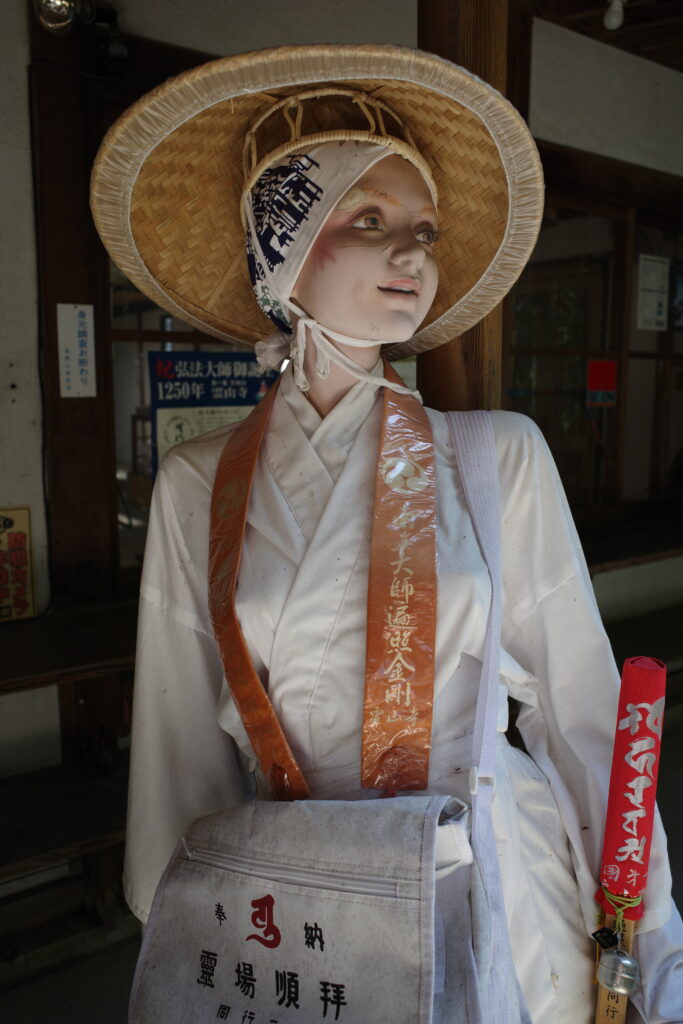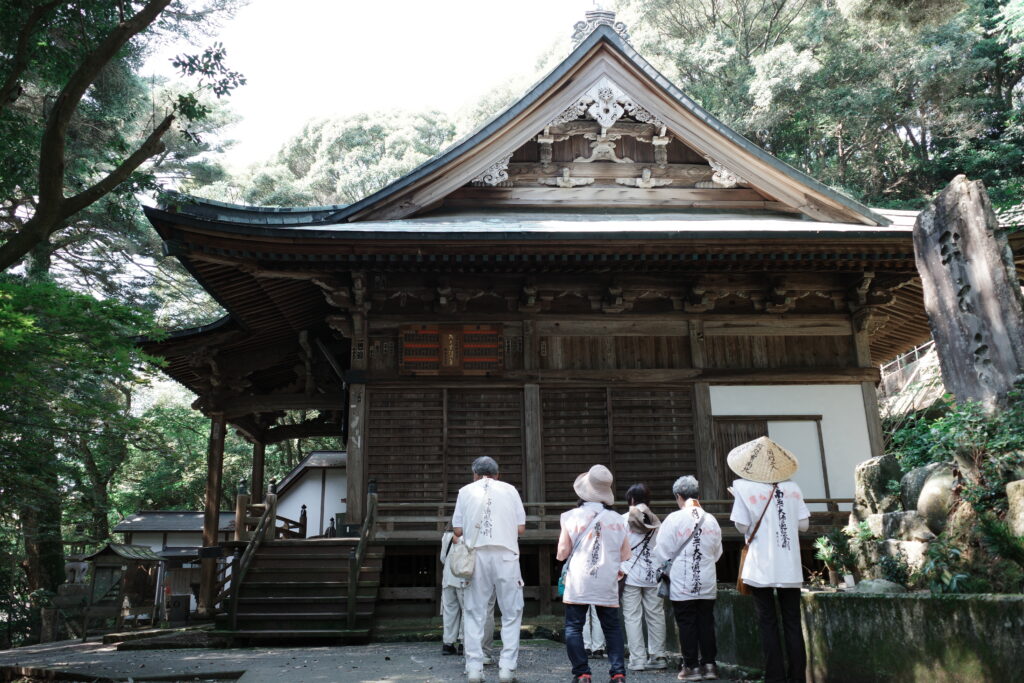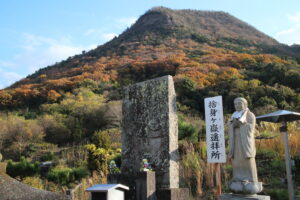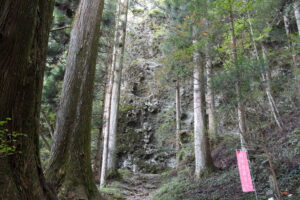Pilgrims on the Shikoku Henro are instantly recognizable by their unique attire. Every item of their getup has both a real-world function and rich symbolic meaning. Let’s take a quick look at some of the representative swag a Henro might don on their journey.
The Sedge Hat (Sugegasa)
Conical sedge hats were once standard fashion for anyone headed outdoors in Japan, offering protection from sun, rain, and unwanted encounters with branches and spiderweds. Pilgrims in Shikoku and elsewhere would write Chinese or Sanskrit characters on their hats to distinguish themselves from average farmers and travelers. The characters on the Henro sugegasa translate as follows:
“Confused, the world appears as an impenetrable fortress. Awakened, the four directions are like the open sky. Essentially there is neither east nor west. Why, then, would there be north or south?”
These haunting lines originally adorned the canopy hung over a deceased person Buddhist funerals. The hat symbolizes a pilgrim’s readiness to give up their live during their journey. In rough-and-tumble medieval Japan this was no empty promise. The small stone pilgrim graves that line the trail are testament to the numbers of faithful who passed away mid-journey.
Apart from the poem, the hat is emblazoned with the Sanskrit syllable Yu representing Kobo Daishi Kukai, and the phrase Dogyo Ninin, meaning “Same Practice, Two People.” This ubiquitous Henro slogan reflects the belief that Kukai himself accompanies pilgrims on their journey.

The Staff, (Kongo-zue)
Pilgrims carry a wooden staff called a Kongo-zue, which means “Vajra Staff.” A Vajra is a Buddhist symbol of wisdom and enlightenment. The top of the staff is covered with a brocade pouch. Beneath the pouch you’ll find a series of notches carved into the staff separating it into five sections, sometimes with Sanskrit characters written on them. These five sections symbolize the Five Elements of Earth, Water, Fire, Wind, and Space which, according to esoteric Buddhism, comprise the entire universe. The staff symbolizes our union with Kukai and the other Buddhas throughout the universe. It is also a reference to the shape of Buddhist tombstones, which also represent the five elements. If a Henro died on their journey, the brocade pouch on their staff could be removed and it could be planted in the ground to mark their grave. Along with the sugegasa hat, the staff means pilgrims are identifiable even at a distance, making it easy for locals to spot when a pilgrim appears in need.
The Stamp Book, or Nokyo-cho
One of the charms of the Henro is receiving the beautiful commemorative stamps and calligraphy available at each temple in a book called a Nokyo-cho. Originally, this was a kind of receipt book for donations at pilgrimage temples. It functioned as a passport at government checkpoints in days when travel was allowed only for pilgrimage and government business. Nowadays completed books are cherished mementos of a sacred journey for pilgrims.
The White Shirt (Haku-e)
The white vest, or haku-e, is the most common Henro clothing seen today. Inspired by the white attire of pilgrims in other regions of Japan, it became widespread in Shikoku when group pilgrimages by bus became popular after World War II. The vest bears the prayer Namu Daishi Henjo Kongo, a prayer of refuge to Kobo Daishi. Some pilgrims have their vest stamped at each temple, later wearing it at their funeral to display their spiritual merit.

The Stole (Wagesa)
Derived from the yellow robes of Buddhist monks, the wagesa has become a standard element of Henro clothing for pilgrims of all kinds. These stoles now come in a variety of colors and designs, serving as both a spiritual garment and a decorative accessory.
The Bag (Zutabukuro)
A zutabukuro is a practical shoulder bag used by pilgrims to carry essential items: name slips, incense, candles, prayer books, a lighter, a bell, maps, and of course the Nokyo-cho. Many find it easier to access than a backpack during temple visits.
Buddhist Prayer Beads (Nenju)
Many pilgrims carry a string of 108 beads called a nenju. Use by the faithful to count their recitations, just carrying it is said to have a protective quality, and the sound of rubbing the beads together is said to scare off evil spirits and draw the blessings of the Buddhas.
Ready to gear up and start your own pilgrimage? Contact us today to start planning your perfect Henro.




